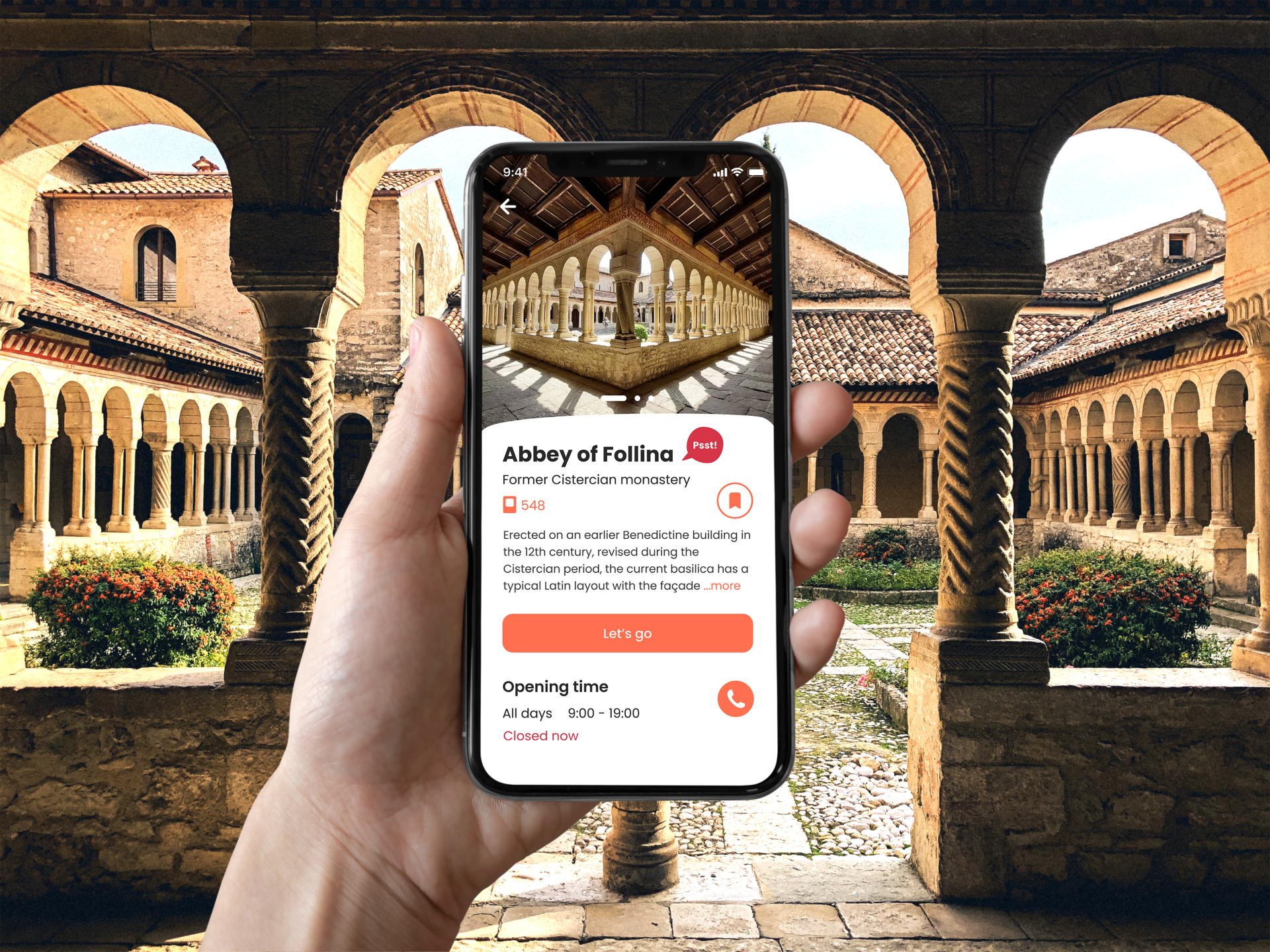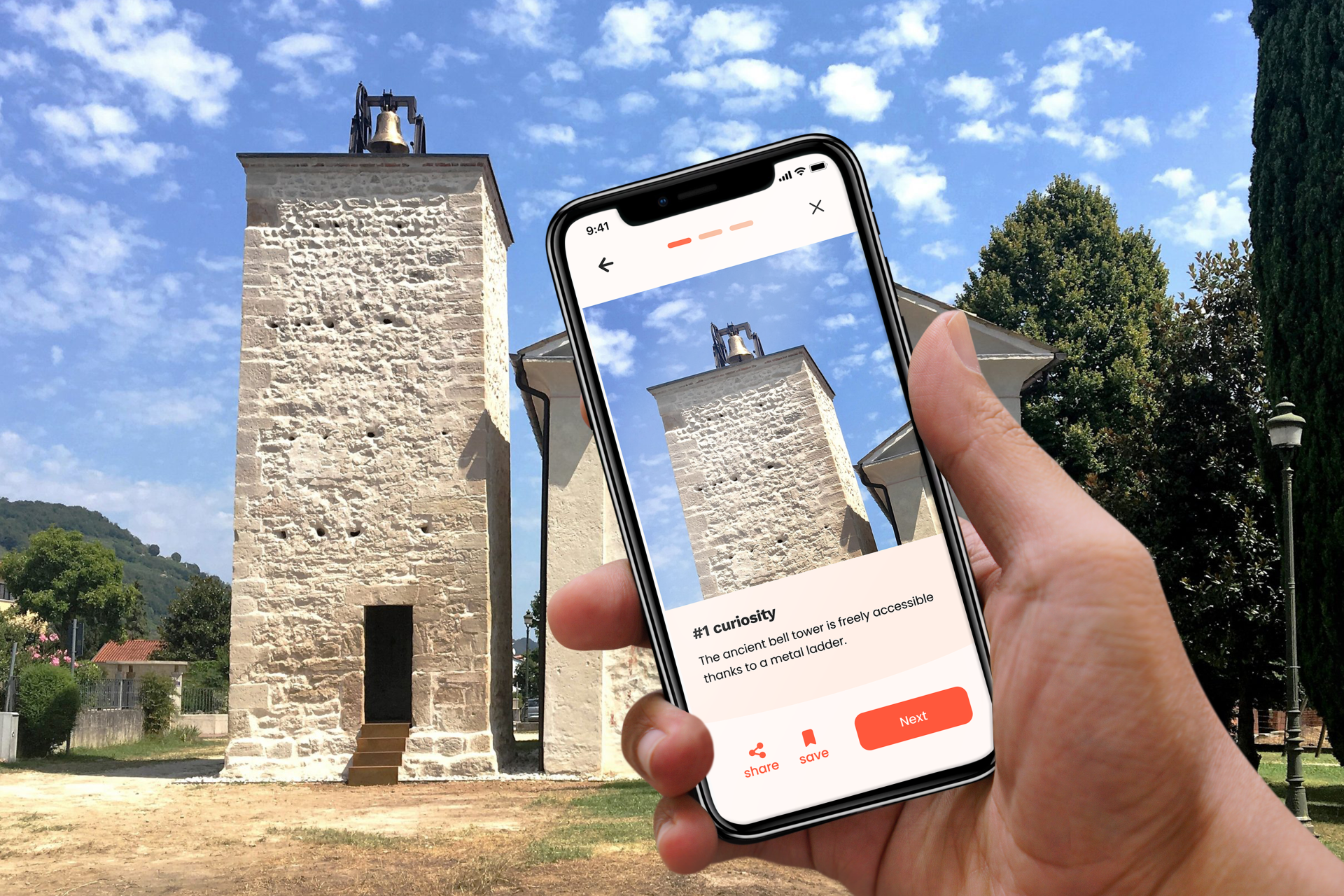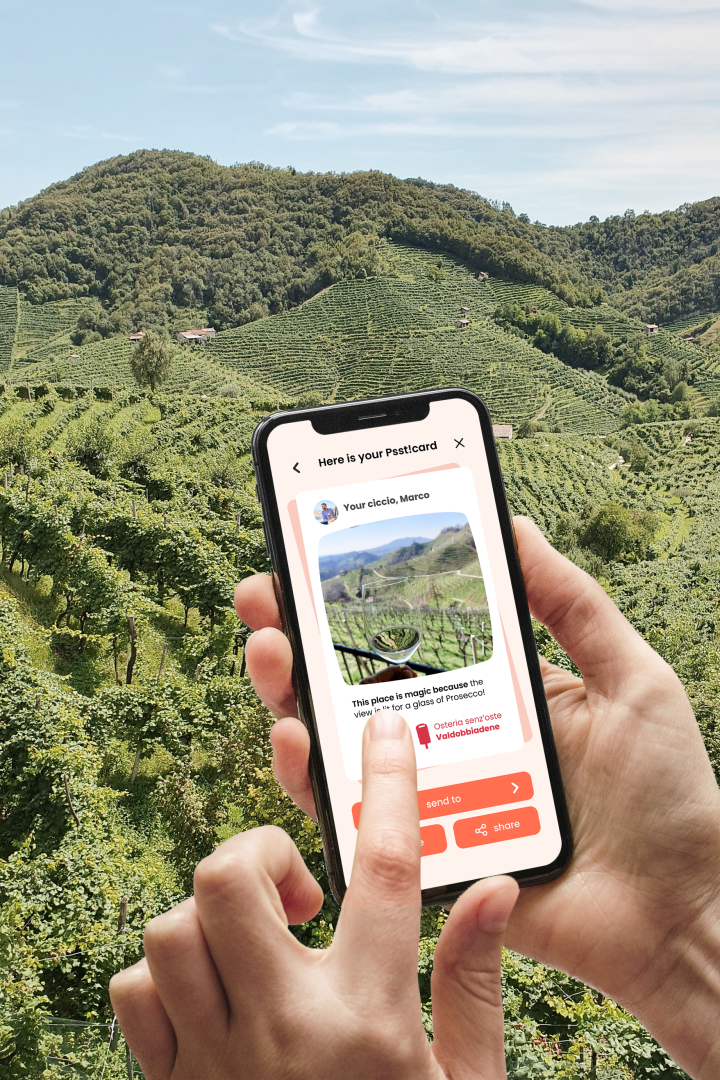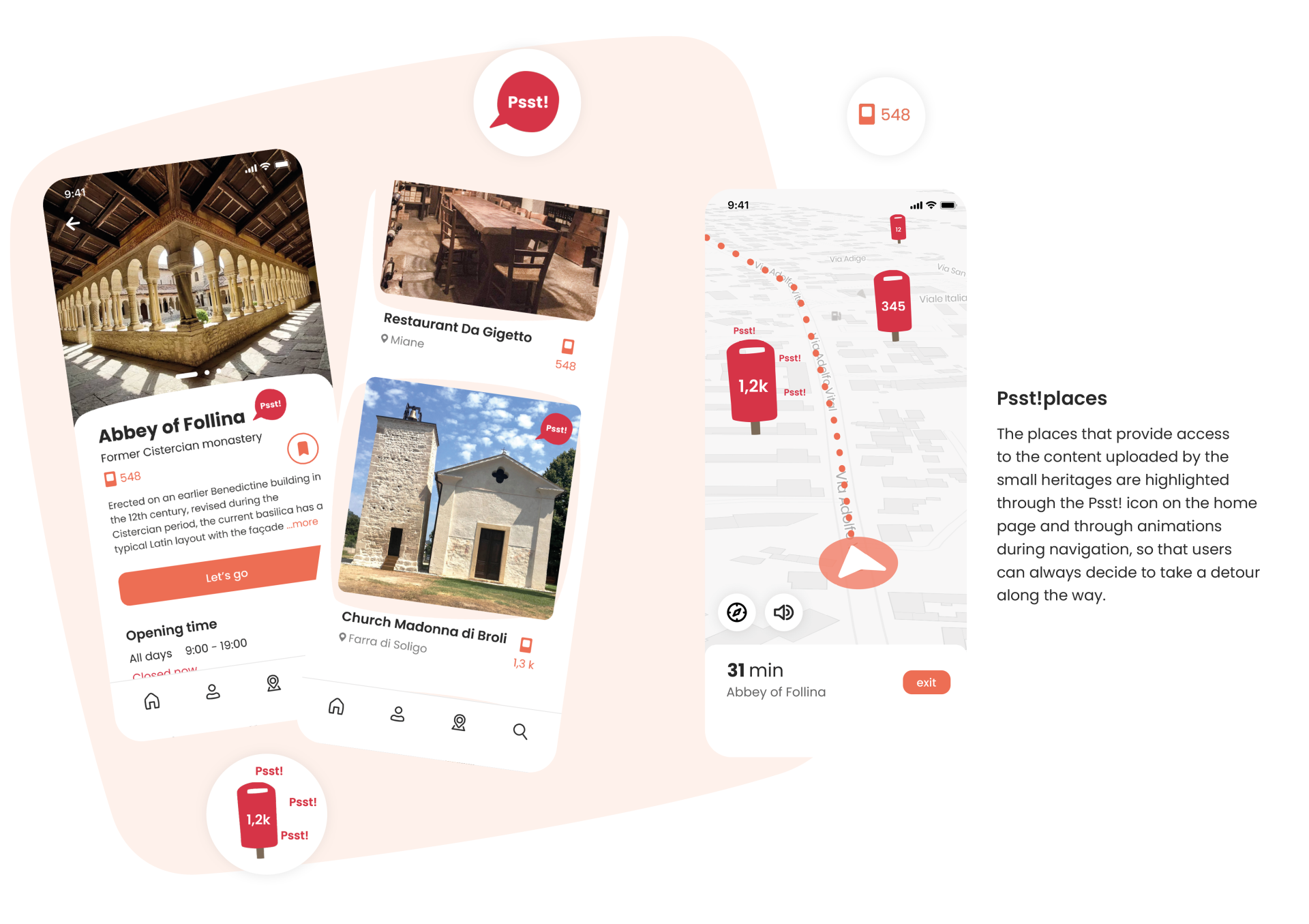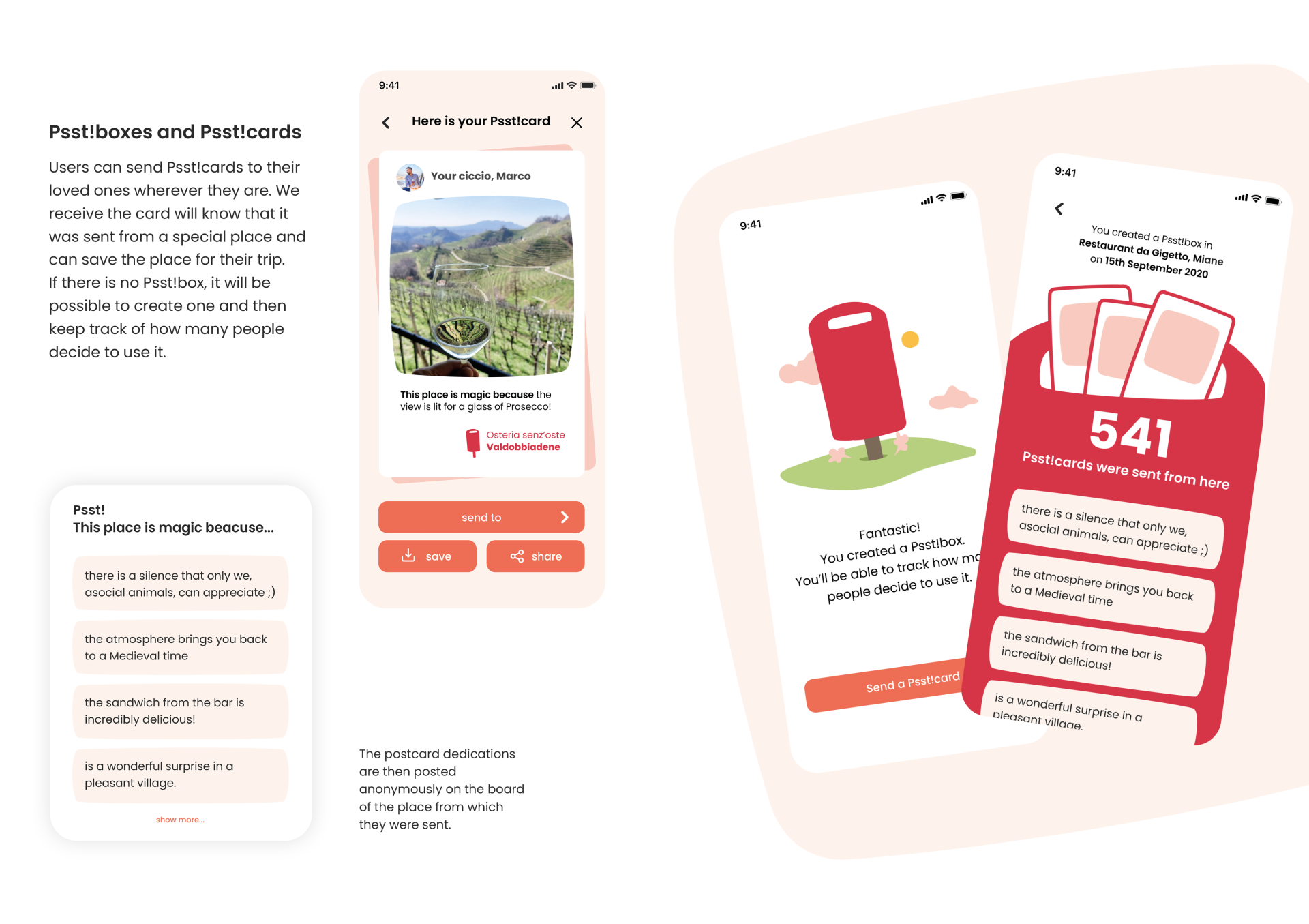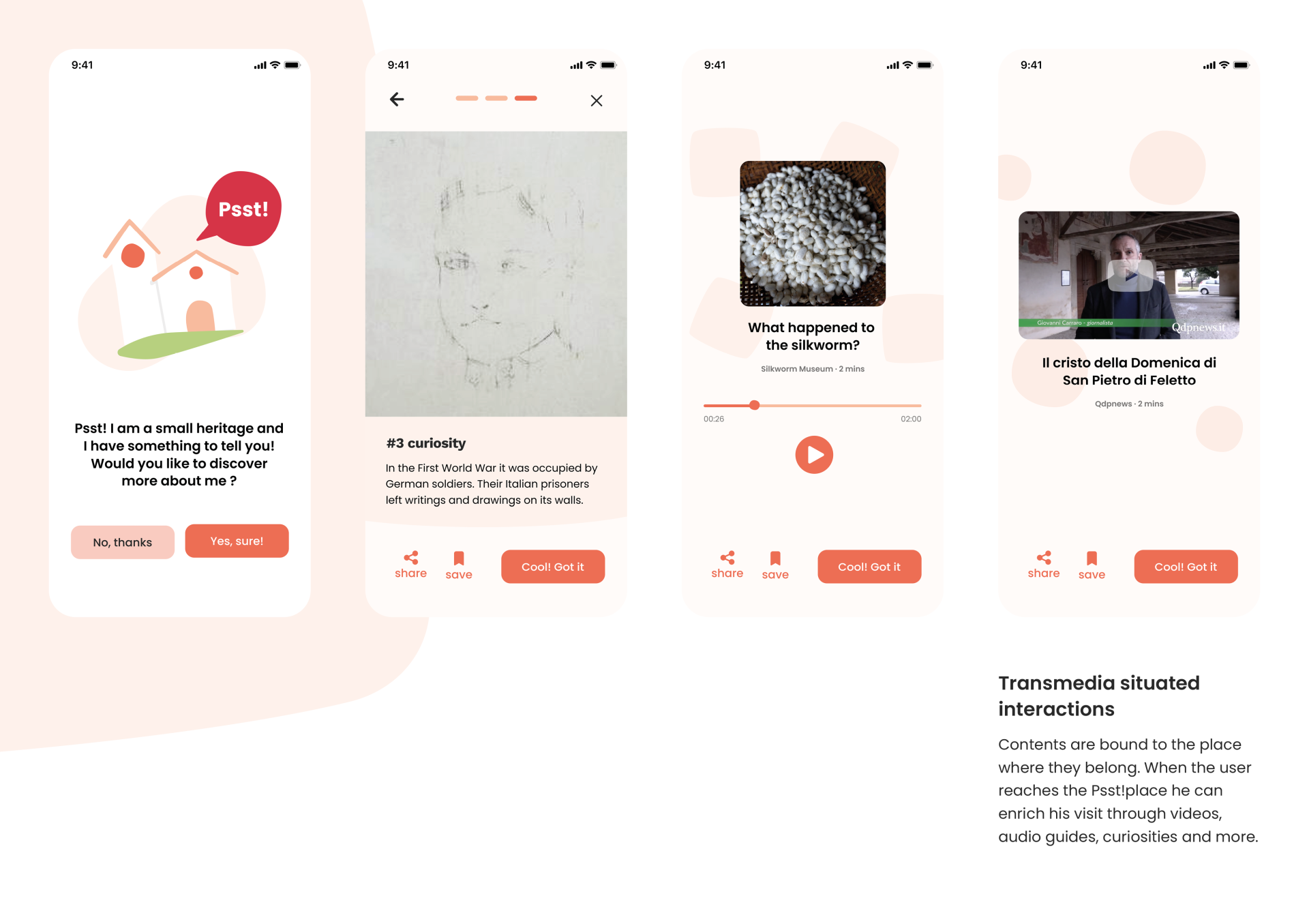Psst! Not on everyone's lips
Basic information
Project Title
Full project title
Category
Project Description
With Psst! you can travel through emotions. Send virtual postcards from anywhere and discover the places that have inspired the most mailing. The App enriches your experience by easily showing which places provide a lot of fascinating and secret content that you will unlock once you reach them. Moreover, you can unleash the magic of the territories thanks to thematic itineraries that bring with them the history and traditions of the areas you are visiting.
Geographical Scope
Project Region
Urban or rural issues
Physical or other transformations
EU Programme or fund
Which funds
Description of the project
Summary
Digitalisation allows large museums to exploit increasingly advanced technologies, which enhance the user experience and ensure greater visibility with the public. However, at the same time, smaller institutions and cultural centers are being adversely affected by this process: with their limited resources, it is impossible to keep up with the fast pace
of digitalisation.
Large institutions have long leveraged technology to accompany their visitors, from the simplest audio guides to interactive panels. Cutting edge museums are now enhancing the visitor experience by providing sophisticated technologies, such as: the Internet of things, augmented and virtual reality, scanners and 3D printers.
“Psst!” is a collective showcase for the promotion and knowledge of small cultural sites, which allows the users to discover new synergies between the heritages on the platform. On the one hand, the solutions offered by the project allow visitors to access minor heritages, often of a popular nature and linked to local tradition. On the other hand, they help small museums and cultural organizations to obtain a digital space with a limited use of resources, both in terms of time and money. The user experience of the platform and a high degree of accessibility of users and stakeholders are therefore pivotal to the research that is carried out for the development of “Psst!”.
A specific case study on Alta Marca Trevigiana area was developed according to a practice based research approach in order to bring the project concept to an experimental level.
Key objectives for sustainability
Sustainability within Psst! is determined by how the experience is carried out. In fact, it wants to place itself within the concept of slow tourism. It focuses on details and accompanies the tourist through a journey to discover hidden places and different cultures in full respect of the environment, all proceeding slowly and calmly in order to capture every extraordinary detail. Moreover, the application tends to suggest routes that can be covered on foot, by bicycle or by train.
Key objectives for aesthetics and quality
One of the main focuses of the research carried out for Psst! was the geo-referencing of the content. This mode of conveying information is extremely effective when dealing with experiences linked to a territory. We cannot imagine a trail guide without a map.
Although this approach is widely used in printed media, in the digital world the potential of georeferencing is still largely unexplored. Applications using this type of content visualisation tend to limit the design to mere functionality. Instead, it is much more common to find printed maps with a narrative connotation. What is often missing in the digital world is therefore what is called “geostorytelling”, which consists of drawing the users into a narrative world that can emotionally involve them.
As in the previous example, one of the most common approaches consists in the development of a thematic route. In this way, it is easy to draw the attention of very specific publics, which are interested in the topic.
Moreover, this kind of storytelling is strictly related to the territory and gives the possibility to enhance its peculiarities.
One of the main goals of the project was not only to give a greater visibility to small heritages, but also to get more people to visit them. The analysis carried out on tourism in the area of Alta Marca Trevigiana showed how varied the motivations of the visitors of this kind of territories are. For example, it is impossible to imagine attracting a sports tourist to a small heritage site by basing the narrative solely on the cultural aspect. Thus, there was a need to find a storytelling that would allow users to consider a deviation from their thematic route. Something that connects the different narrative levels. In addition, this narrative had to be wide-ranging, detached from the peculiarities of the territory and the boundary defined by institutions. In fact, the project is also designed for application outside of the case study.
Key objectives for inclusion
It was decided to develop a system that would allow visitors to co-create the value of the application through their emotionality, which is applicable in all places and is by definition common to all human beings. Once they have reached a point of interest, users will then have the opportunity to send a virtual “postcard” to an acquaintance or someone close to them. The postcard will feature a sentence inviting people to write their emotions. This expedient allows a standardisation of the form of the thoughts written by the users, which are then used to enhance the place from which the postcard was sent. On each site there will be a virtual “postbox”, which will make it possible to know how many people have decided to send a postcard from that particular place, thus measuring how much that place has left a mark on their hearts. This feature allows users to choose the next place to visit based on how many postcards have been sent there. Small heritage managers, such as owners of small private museums, can upload content to the app easily and guided by the suggestions the app gives them for each type of material they want to upload.
Physical or other transformations
Innovative character
In Psst! Sustainability, value co-creation and quality of experience combine to create new synergies that engage visitors and stakeholders. The concept wants to create real experiences, with a somewhat nostalgic connotation for real life and real emotions. Sustainability is perhaps the aspect that in Psst! is transmitted in a more hidden way. The user lives the experience guided by the application and almost unconsciously is invited to move in a sustainable way, looking around and respecting the places he visits thanks to the value that is emphasized through the application.

